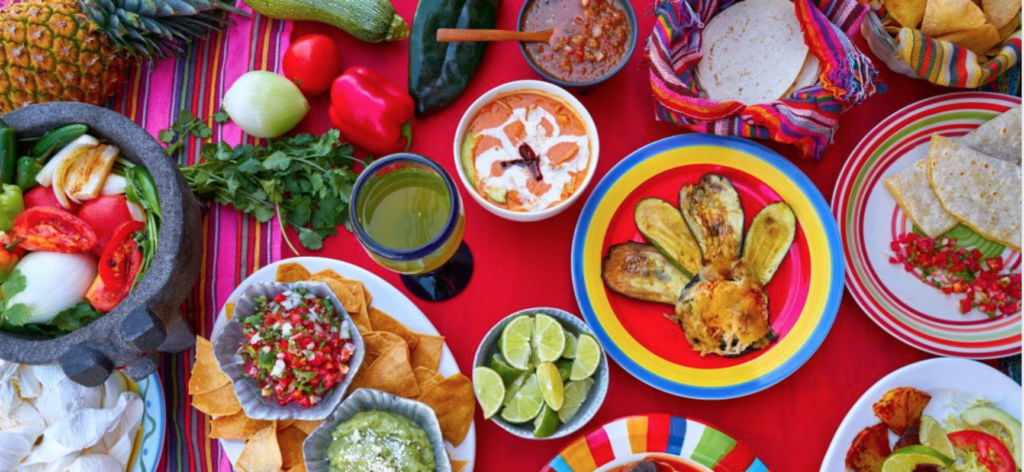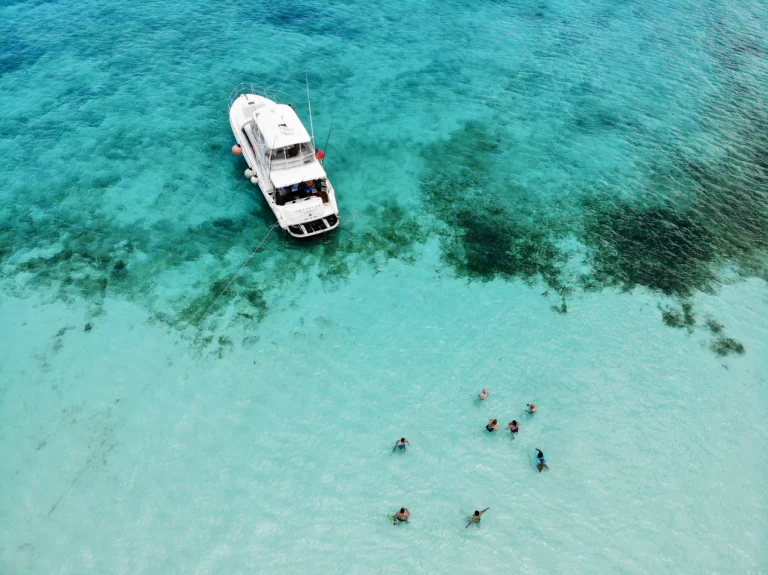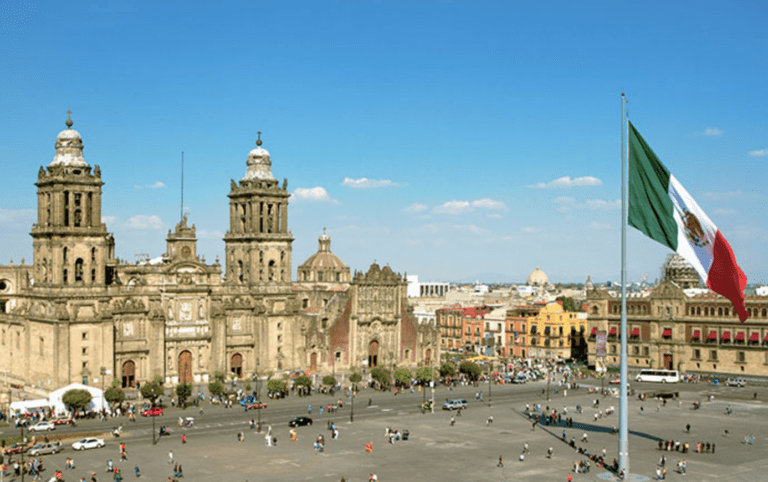Unearthing Quintana Roo’s Majestic Maya Archaeological Sites

Nestled on the eastern coast of Mexico, Quintana Roo is a captivating region known for its pristine beaches, lush jungles, and a rich historical tapestry that dates back to ancient times. While it has gained international recognition as a tropical paradise with its turquoise waters and vibrant nightlife in destinations like Cancún and Playa del Carmen, Quintana Roo also boasts a hidden treasure trove of archaeological wonders. These treasures are the remnants of a great civilization that once flourished here – the illustrious Maya civilization.
The Maya Civilization: An Enigmatic Legacy :The Maya civilization, which thrived in Mesoamerica for millennia, left an indelible mark on the annals of human history. Renowned for its advanced mathematics, complex hieroglyphic writing system, and awe-inspiring architectural achievements, the Maya culture continues to captivate scholars and adventurers alike.
A Glimpse into Maya History :Stretching back over 3,000 years, the Maya civilization’s history is a tapestry of achievements and mysteries. It reached its zenith between the 6th and 9th centuries, with cities like Tikal, Calakmul, and Chichen Itza serving as bustling centers of trade, culture, and knowledge. The Maya were visionary astronomers, devising accurate calendars that rivaled those of their contemporaries. However, their civilization also faced enigmatic challenges, including the collapse of several major city-states around the 10th century. The reasons for this decline continue to puzzle archaeologists and historians. Despite these setbacks, the Maya people endured, with their descendants still residing in parts of Mexico, Guatemala, Belize, Honduras, and El Salvador, preserving their cultural heritage through language, customs, and traditions.
Quintana Roo’s Connection to Maya Civilization:Quintana Roo, situated in the heartland of the ancient Maya world, is home to some of the most remarkable archaeological sites that offer a window into this extraordinary civilization’s past. As you embark on a journey through the captivating landscapes and ancient ruins of Quintana Roo, prepare to be transported back in time to an era of remarkable achievements, profound spirituality, and timeless artistry. In this Visitax‘ article, we will embark on a virtual exploration of the most iconic Maya archaeological sites in Quintana Roo, revealing their historical significance and providing invaluable insights for your own adventurous visit. So, grab your explorer’s hat and let’s delve into the secrets of Quintana Roo’s majestic Maya legacy.
Iconic Archaeological Sites: Unveiling Quintana Roo’s Mayan Marvels

Quintana Roo, a Mexican gem nestled along the Yucatán Peninsula, harbors some of the most renowned archaeological treasures of the Maya civilization. As you embark on your journey to explore the ancient mysteries of this region, these iconic sites are not to be missed. From the breathtaking coastal ruins of Tulum to the enigmatic pyramids of Coba, each of these historical landmarks tells a captivating story of the Maya’s grandeur.
Tulum: The Cliffside Citadel of the Maya
History and Significance: Standing majestically atop limestone cliffs overlooking the Caribbean Sea, Tulum is often referred to as the “Walled City” due to its well-preserved defensive fortifications. Built during the late Postclassic period (around 1200-1450 AD), Tulum served as a thriving Maya port city, a center for trade, and an important hub for astronomy and Mayan rituals. Its strategic coastal location made it a key point for maritime trade routes, connecting the Maya civilization to other Mesoamerican cultures. The word “Tulum” itself means “wall” in the Yucatec Maya language, aptly reflecting the city’s formidable protective walls.
Visitor Experience: Today, visitors can explore Tulum’s ancient structures, including the Temple of the Frescoes adorned with intricate murals and the imposing El Castillo. Strolling through the ruins, you’ll feel the mystical aura of a city where the Maya once worshipped their gods and made celestial observations. Don’t forget to bring your swimsuit, as Tulum boasts a picturesque beach where you can take a refreshing dip after your archaeological adventure.
Coba: Climbing the Pyramid of Nohoch Mul
History and Significance: Venture deeper into the Quintana Roo jungle, and you’ll discover the ancient city of Coba. Coba reached its zenith during the Classic period (600-900 AD) and was known for its extensive network of stone causeways, or “sacbeob,” connecting various parts of the city. The highlight of Coba is undoubtedly the colossal Pyramid of Nohoch Mul, towering at approximately 137 feet (42 meters). Climbing this pyramid offers not only a heart-pounding adventure but also panoramic views of the surrounding jungle, allowing you to grasp the vastness of this once-thriving metropolis.
Visitor Experience: Exploring Coba takes you on a journey through dense tropical foliage, where you’ll encounter various stelae and carved monuments that provide glimpses into Maya history and culture. Rent a bicycle or hire a local guide to navigate the sprawling site efficiently. Your visit to Coba will not only be an archaeological exploration but also a chance to connect with the lush natural beauty of Quintana Roo.
More Mayan Marvels to Discover:
While Tulum and Coba are quintessential stops on your Mayan adventure, Quintana Roo offers numerous other archaeological sites waiting to be explored. Consider adding these to your itinerary:
-
Muyil: Nestled within the Sian Ka’an Biosphere Reserve, Muyil features a unique combination of Mayan ruins and stunning natural surroundings. Explore ancient structures, including the El Castillo pyramid, and take a tranquil boat ride through the picturesque Muyil Lagoon.

-
Xel-Há: This site combines archaeological wonders with aquatic adventures. Discover the ruins of Xel-Há, where a network of channels once facilitated trade, and then dive into the crystal-clear waters of the natural inlet, renowned for its snorkeling opportunities.
As you plan your expedition to these archaeological gems, prepare to embark on a voyage through time, uncovering the secrets and stories of the Maya civilization that continue to echo through the centuries. In the following sections, we’ll provide practical tips and insights to enhance your exploration of these remarkable sites.
Practical Tips for Exploring Quintana Roo’s Archaeological Sites
Visiting the awe-inspiring archaeological sites of Quintana Roo requires some thoughtful planning to ensure a memorable and comfortable experience. In this section, we’ll guide you through the key factors to consider before embarking on your Mayan adventure.
Choosing the Best Time to Visit
Climate Considerations: Quintana Roo enjoys a tropical climate, characterized by warm temperatures and distinct wet and dry seasons. The ideal time to explore the archaeological sites is during the dry season, which typically runs from November to April. During these months, you’ll encounter pleasant weather with less chance of rain, making your exploration more enjoyable. Avoiding Crowds: To escape the crowds and fully appreciate the sites’ tranquility, consider visiting early in the morning when they open or later in the afternoon. Weekdays are generally less crowded than weekends and holidays. Keep in mind that some sites, like Tulum, can get particularly busy during peak tourist season, so planning your visit accordingly is essential.
Understanding Entrance Fees and Opening Hours
Entrance Fees: Each archaeological site in Quintana Roo may have varying entrance fees, often in Mexican pesos. As of my knowledge cutoff date in January 2022, Tulum’s entrance fee was around 80 Mexican pesos (approximately 4 USD), while Coba’s fee was about 75 Mexican pesos (around 3.75 USD). Keep in mind that prices may change over time, so it’s advisable to check the latest rates before your visit. Additionally, some sites offer discounts for students, children, and Mexican residents, so be sure to inquire about any available reductions.
Opening Hours: The opening hours of archaeological sites in Quintana Roo typically follow daylight hours, with sites opening around 8:00 AM and closing around 5:00 PM. However, these hours may vary slightly depending on the season, so it’s wise to confirm the specific opening and closing times for the sites you plan to visit. Arriving early allows you to explore in cooler temperatures and avoid midday heat, while visiting in the late afternoon offers a quieter experience.
Guides and Tours
Local Guides: Engaging the services of a local guide can greatly enrich your visit to Quintana Roo’s archaeological sites. Local guides possess in-depth knowledge of the history, culture, and significance of the sites. They can share captivating stories and insights that you might not discover on your own. Guides are usually available for hire at the entrance of the sites, and it’s customary to negotiate the price beforehand.
Audio Guides and Apps: Some archaeological sites, including Tulum, offer audio guides or smartphone apps with informative audio commentary in multiple languages. These can be a cost-effective way to enhance your understanding of the sites if you prefer a self-guided tour.
By considering these practical tips, you can plan your visit to Quintana Roo’s archaeological sites with confidence, ensuring an enjoyable and enriching experience. In the next section, we’ll delve deeper into the remarkable history and significance of each site, providing you with a deeper appreciation of these Mayan marvels.
Enhancing Your Archaeological Adventure
As you embark on your journey to explore Quintana Roo’s ancient Mayan sites, it’s essential to ensure a comfortable and enriching experience. Here are some valuable tips to help you make the most of your visit:
1. Be Prepared:Hydration is Key: Quintana Roo’s tropical climate can be hot and humid, especially during the peak tourist season. To stay refreshed and energized, bring plenty of water with you. Consider a reusable water bottle to reduce plastic waste, and remember to stay hydrated throughout your visit.
Comfortable Footwear: Walking is a fundamental part of exploring these archaeological wonders. Opt for comfortable, closed-toe shoes with good traction. This choice will not only provide comfort but also ensure your safety on uneven terrain.
2. Protect Yourself:Sun Protection: The Mexican sun can be intense, so don’t forget to apply sunscreen generously and regularly, even on cloudy days. A wide-brimmed hat, sunglasses, and lightweight, long-sleeved clothing can provide additional protection from the sun’s rays. Insect Repellent: In the lush jungle surroundings of some sites, mosquitoes and other insects can be prevalent. Packing insect repellent can help you enjoy your visit without pesky interruptions.
3. Explore Beyond the Crowds:Off the Beaten Path: While the most famous structures at these sites are undoubtedly impressive, don’t hesitate to venture off the well-trodden paths. Explore the less-visited corners of the archaeological sites to discover hidden gems, smaller structures, and serene spots for reflection. Quiet Moments: Find a secluded spot to sit and absorb the atmosphere. Close your eyes, and imagine what life was like for the Maya who once inhabited these sites. The sense of history can be particularly poignant when you’re away from the crowds.
4. Embrace the Details:Carvings and Inscriptions: Take the time to examine the intricate carvings, inscriptions, and glyphs that adorn many of the structures. These etchings offer insights into the Maya’s complex calendar systems, mythological beliefs, and historical events. Observation Points: Seek out vantage points that offer panoramic views of the surrounding landscape. The Maya were keen astronomers, and their architectural alignment with celestial events is a testament to their advanced knowledge.
5. Guided Tours and Insights:Local Guides: Engaging a local guide, as mentioned previously, can provide a wealth of information and context. Guides can help decipher the stories hidden in the stones and bring the ancient world to life through storytelling. Audio Guides and Apps: If you prefer a self-guided tour, consider using audio guides or smartphone apps, where available. These resources often provide fascinating historical and cultural insights as you explore at your own pace.
By following these practical tips and embracing the spirit of exploration, you’ll not only have a comfortable and enjoyable visit to Quintana Roo’s archaeological sites but also gain a deeper appreciation for the remarkable achievements of the Maya civilization. As you wander among the ancient ruins, you’ll be immersed in the rich tapestry of history and culture that continues to captivate visitors from around the world.
Preservation Matters: Protecting Quintana Roo’s Archaeological Treasures

While exploring the enchanting world of Quintana Roo’s archaeological sites, it’s crucial to understand the significance of preservation and the role tourists play in safeguarding these historical marvels. Here, we emphasize the importance of conservation and how responsible tourism practices can make a lasting difference.
Why Preservation Matters:
Preserving History: These archaeological sites are windows into a civilization that thrived centuries ago. They offer invaluable insights into the Maya’s art, culture, and way of life. Preserving these sites ensures that future generations can continue to learn from and be inspired by their remarkable heritage.
Environmental Impact: The natural surroundings of many archaeological sites are delicate ecosystems. Large crowds, pollution, and unregulated development can harm not only the sites themselves but also the flora and fauna in the area. Responsible tourism helps mitigate these negative effects.
How Tourists Can Contribute to Preservation:
Respect the Rules: One of the most important ways tourists can aid in preservation is by respecting the rules and regulations set by site authorities. These rules are designed to protect both the sites and visitors. Common regulations include not climbing on structures, not touching or defacing artifacts, and disposing of trash properly.
Stay on Designated Paths: Straying from designated paths can damage fragile archaeological remains and disrupt the surrounding environment. Stick to marked trails and avoid trampling on vegetation.
Leave No Trace: Leave the site as you found it. Avoid leaving any litter behind, and refrain from taking souvenirs, whether they be rocks, carvings, or pottery shards. Even seemingly small actions can accumulate and harm the site over time.
Responsible Behaviors During Your Visit:
Photography and Selfies: While capturing memories is an essential part of your visit, exercise caution when taking photos. Avoid leaning on or against structures, and be mindful of the flash, which can degrade ancient pigments in murals and carvings.
Noise Levels: Maintain a respectful volume level when talking or using electronic devices. Excessive noise can disturb other visitors and the tranquility of the site.
Support Sustainable Tourism Initiatives: Consider supporting tour operators and businesses that prioritize sustainable practices and contribute to the preservation efforts of these sites.
Educate Yourself and Others:
Learn About the Sites: Educate yourself about the history and significance of the sites before your visit. Understanding the context enhances your experience and fosters a deeper appreciation for what you’re witnessing.
Share the Message: Share the importance of preservation and responsible tourism with fellow travelers. Encourage others to adopt similar behaviors and respect the sites they visit.
Conclusion: Protecting Quintana Roo’s Heritage
Preservation isn’t solely the responsibility of site authorities or local communities—it’s a collective effort that includes tourists like you. By embracing responsible tourism practices, you become a steward of Quintana Roo’s archaeological treasures. Your actions today contribute to the longevity of these historical sites, ensuring that future generations can continue to explore, learn from, and cherish the legacy of the Maya civilization. In the final section of this article, we’ll explore the vibrant culture and tantalizing cuisine of Quintana Roo, offering you even more reasons to savor your visit to this remarkable region.
Immerse Yourself in Quintana Roo’s Local Culture and Culinary Delights

Exploring Quintana Roo isn’t just about historical marvels; it’s also an opportunity to savor the vibrant local culture and indulge in the region’s mouthwatering cuisine. In this section, we’ll take you on a journey through the heart of Quintana Roo’s culture and culinary traditions.
Quintana Roo’s Rich Cultural Tapestry:
Maya Influence: Quintana Roo’s culture is deeply rooted in its Maya heritage. You’ll find the Maya influence everywhere, from the architecture to the art, music, and spirituality. The traditional Maya language, Yucatec Maya, is still spoken by many residents, and ancient customs and ceremonies continue to be observed.
Festivals and Celebrations: Plan your visit around local festivals and celebrations to fully immerse yourself in Quintana Roo’s culture. The vibrant colors, lively music, and dance performances during events like Day of the Dead and Carnival are truly captivating.
Discovering Traditional Cuisine:
Yucatecan Cuisine: Quintana Roo’s culinary scene is a treat for food enthusiasts. Yucatecan cuisine, with its blend of Maya, Spanish, and Caribbean influences, is a must-try. Be sure to sample traditional dishes like cochinita pibil (slow-roasted pork), papadzules (tortillas filled with egg and topped with pumpkin seed sauce), and salbutes (fried tortillas with various toppings).
Seafood Delights: Given its coastal location, Quintana Roo boasts an abundance of fresh seafood. Indulge in ceviche, a refreshing dish made with marinated fish or shrimp, or try tikinxic, a fish marinated in achiote paste and grilled to perfection.
Local Dining Recommendations:
El Fogón (Playa del Carmen): This popular restaurant is known for its authentic Yucatecan cuisine, including mouthwatering tacos al pastor and arrachera (grilled skirt steak). The lively atmosphere and affordable prices make it a favorite among locals and tourists alike.
Hartwood (Tulum): For a more upscale dining experience, consider Hartwood, an eco-friendly restaurant in Tulum that focuses on locally sourced, seasonal ingredients. The ever-changing menu reflects the region’s flavors and offers a unique culinary adventure.
Street Food Stalls: Don’t hesitate to explore the local street food stalls and markets. You’ll find delicious antojitos (street snacks) like tamales, empanadas, and marquesitas (sweet crepes) being prepared right before your eyes.
Sampling Local Beverages:
Chaya-Based Drinks: Quintana Roo’s traditional beverages often feature chaya, a leafy green vegetable. Sip on chaya water, which is both refreshing and healthy, or try a chaya-based smoothie for a nutritious energy boost. Agua de Jamaica: This hibiscus flower tea is a popular local drink, served cold and sweetened to taste. It’s a perfect way to quench your thirst in the tropical climate.
By savoring the culture and cuisine of Quintana Roo, you’ll complement your archaeological explorations with a sensory journey that’s just as enriching. From the vibrant colors of local festivals to the tantalizing flavors of traditional dishes, Quintana Roo invites you to celebrate its unique culture and culinary heritage. After a day of archaeological discoveries, these cultural and gastronomic experiences will leave you with lasting memories of this remarkable region.
Exploring Quintana Roo’s Enchanting Surroundings
While Quintana Roo’s archaeological sites offer a captivating journey into the past, the region also boasts a wealth of diverse activities that allow you to bask in its natural beauty and deepen your understanding of its rich heritage. Here are some enticing activities to complement your archaeological adventure:
1. Discover Pristine Beaches:
Quintana Roo is renowned for its stunning coastline, and no visit is complete without basking in the sun on its breathtaking beaches. Here are a few notable options:
-
Playa del Carmen: This vibrant beach town offers powdery white sands and crystal-clear waters. Stroll along the bustling Quinta Avenida (Fifth Avenue) for shopping, dining, and nightlife.
-
Playa Paraiso (Tulum): Known as “Paradise Beach,” this idyllic spot lives up to its name with powdery sands and turquoise waters. It’s an excellent place for relaxation and snorkeling.
-
Isla Holbox: A peaceful paradise located to the northwest of Cancún, Isla Holbox boasts serene beaches, opportunities for whale shark tours, and a charming, laid-back atmosphere.
2. Snorkeling and Diving in Cenotes:
Explore the mystical world of cenotes, natural sinkholes filled with crystal-clear freshwater. These cenotes offer incredible opportunities for snorkeling and diving, where you can swim in underground rivers and explore stunning cave formations. Some popular cenotes for water adventures include Dos Ojos, Gran Cenote, and Ik Kil.
3. Visit Maya-themed Museums:
To delve deeper into the Maya civilization and its history, consider visiting some of the region’s excellent museums:
-
Museo Maya de Cancún: Located in Cancún, this museum offers an extensive collection of Maya artifacts and provides valuable insights into the culture’s history.
-
Museo de la Cultura Maya (Chetumal): Explore the capital city of Quintana Roo and visit this museum, which showcases artifacts, art, and historical exhibits related to the Maya.
4. Experience Ecotourism Adventures:
Quintana Roo’s lush natural landscapes are perfect for eco-adventures:
-
Sian Ka’an Biosphere Reserve: Take a guided tour of this UNESCO World Heritage Site to witness diverse ecosystems, spot wildlife, and learn about sustainable conservation efforts.
-
Xcaret Park (Playa del Carmen): This ecological theme park offers a wide range of activities, from snorkeling in underground rivers to exploring wildlife and enjoying cultural shows.
5. Maya Ruins Beyond Quintana Roo:
If your appetite for Maya archaeology remains unsated, consider venturing to nearby archaeological sites outside Quintana Roo. Notable options include Palenque in Chiapas, Uxmal and Kabah in Yucatán, and Copán in Honduras.
6. Cultural Experiences:
Attend traditional Maya ceremonies or workshops to learn about ancient traditions, such as pottery-making or chocolate production. Engaging with local communities can provide a deeper understanding of the living Maya culture.
Quintana Roo offers a diverse array of activities that allow you to complement your archaeological exploration with natural beauty, adventure, and cultural immersion. Whether you’re lounging on pristine beaches, snorkeling in cenotes, or embarking on ecotourism adventures, the region invites you to create a well-rounded and unforgettable travel experience.
Additional Resources for Your Quintana Roo Adventure
To help you plan your visit to Quintana Roo and explore its archaeological wonders, we’ve gathered a list of valuable resources, including tourist guides, maps, useful mobile apps, and official websites for archaeological sites:
1. Tourist Guides:
2. Maps:
3. Mobile Apps:
-
Visit Mexico (Official Tourism App): This app provides information about attractions, hotels, restaurants, and more across Mexico, including Quintana Roo. Available on iOS and Android.
-
Maya Ruins (iOS): This app offers detailed information about various Maya archaeological sites in Mexico, including Quintana Roo.
4. Official Websites of Archaeological Sites:
- National Institute of Anthropology and History (INAH) – Muyil Archaeological Site
- Tulum Archaeological Zone Official Website
- Coba Archaeological Zone Official Website
- Muyil Archaeological Zone Official Website
- Xel-Há Park (Tulum) – Official Website
- Sian Ka’an Biosphere Reserve – Official Website
These resources should provide you with the information you need to plan your Quintana Roo adventure, explore archaeological sites, and discover the many wonders of this beautiful region. Enjoy your journey!
Traveler Testimonials: Tales from Quintana Roo’s Maya Wonders
Hearing the experiences of fellow travelers who have explored Quintana Roo’s Maya archaeological sites can provide valuable insights and personal perspectives. Here are a few testimonials and anecdotes from adventurers who have ventured into this captivating realm:
1. Sarah’s Reflections at Tulum:
“Visiting Tulum was like stepping into a time capsule. Standing atop the cliffs, with the turquoise Caribbean Sea stretching endlessly before me, I marveled at the ancient city’s beauty. The sea breeze seemed to whisper tales of Maya merchants trading along the coast. Exploring Tulum’s well-preserved structures, I couldn’t help but admire the skill of the Maya architects who built these temples and fortifications. It was an experience that connected me to the rich history of this land.”
2. Carlos’s Adventure in Coba:
“Coba was a true adventure! Biking through the dense jungle to reach the Pyramid of Nohoch Mul was an exhilarating experience. When I reached the top, the view was breathtaking. I could see the vast expanse of the rainforest and the ancient pathways the Maya used for trade. It was a powerful reminder of the impressive civilization that once thrived here.”
3. Emily’s Encounter with Cenotes:
“The cenotes of Quintana Roo are like portals to another world. Snorkeling in the crystal-clear waters of Dos Ojos cenote was surreal. It felt like I was floating through an underground cathedral adorned with surreal rock formations and incredible stalactites. The experience was both serene and awe-inspiring, reminding me of the hidden natural wonders beneath the surface.”
4. Javier’s Cultural Connection:
“While exploring Quintana Roo, I had the privilege of attending a traditional Maya ceremony. The authenticity and spirituality of the event left a profound impact on me. Witnessing the rituals, hearing the music, and tasting the traditional cuisine helped me connect with the living Maya culture in a way I hadn’t expected. It was a humbling and enriching experience.”
These testimonials capture the essence of Quintana Roo’s archaeological sites, from the sense of wonder inspired by Tulum’s coastal beauty to the exhilaration of reaching Coba’s towering pyramid. The cenotes offer a glimpse into the region’s hidden natural wonders, while cultural encounters provide a deep connection to Quintana Roo’s living heritage. Each traveler’s story is a testament to the diverse and captivating experiences that await those who embark on a journey to this remarkable region.
Conclusion: Embark on Your Quintana Roo Adventure
In the course of this article, we’ve embarked on a virtual journey through the captivating world of Quintana Roo’s Maya archaeological sites. From the coastal majesty of Tulum to the jungle-clad mysteries of Coba, and from the mesmerizing cenotes to the cultural riches of the region, Quintana Roo beckons with an array of treasures waiting to be explored.
Key Takeaways:
- Quintana Roo, with its historical significance and breathtaking natural beauty, offers a multifaceted adventure for travelers.
- Iconic archaeological sites such as Tulum and Coba unveil the remarkable achievements of the Maya civilization.
- Practical tips, responsible tourism practices, and cultural immersion enhance your journey.
- The region’s cultural heritage and delectable cuisine provide additional layers of discovery.
- Diverse activities, from beach lounging to cenote snorkeling, promise unforgettable moments.
- Traveler testimonials offer personal perspectives on Quintana Roo’s allure.
Plan Your Quintana Roo Adventure:
As we conclude, we invite you to embark on your own Quintana Roo adventure. Whether you’re an archaeology enthusiast, a nature lover, or a culture seeker, this region promises a treasure trove of experiences. So, dust off your explorer’s hat, pack your sense of wonder, and set your sights on Quintana Roo’s historical marvels, pristine beaches, and cultural gems.
Remember to check the latest travel advisories, entrance fees, and hours of operation for the archaeological sites you plan to visit. Respect the local environment and heritage, and embrace the rich culture and flavors that Quintana Roo has to offer.
Your journey awaits, where history meets nature, and discovery knows no bounds. Quintana Roo invites you to explore, connect, and create lasting memories in a place where the echoes of the past resonate through the present. Happy travels!

Sandra Leutmann, a distinguished international travel expert, holds a diploma from the University of Bremen. With over two decades of experience, she has traversed the globe, enriching her insights into diverse cultures and destinations. Sandra’s expertise is sought after by travelers and industry professionals alike, as she crafts bespoke itineraries that promise authentic and memorable experiences. She was a keynote speaker at the TTG Travel experience conference in Rimini and the WTM in London.






